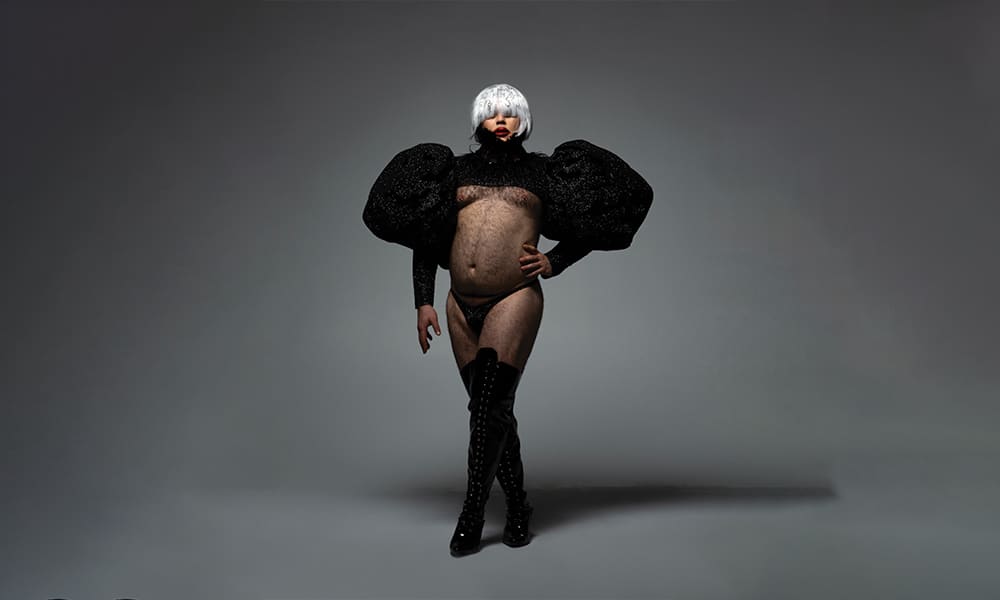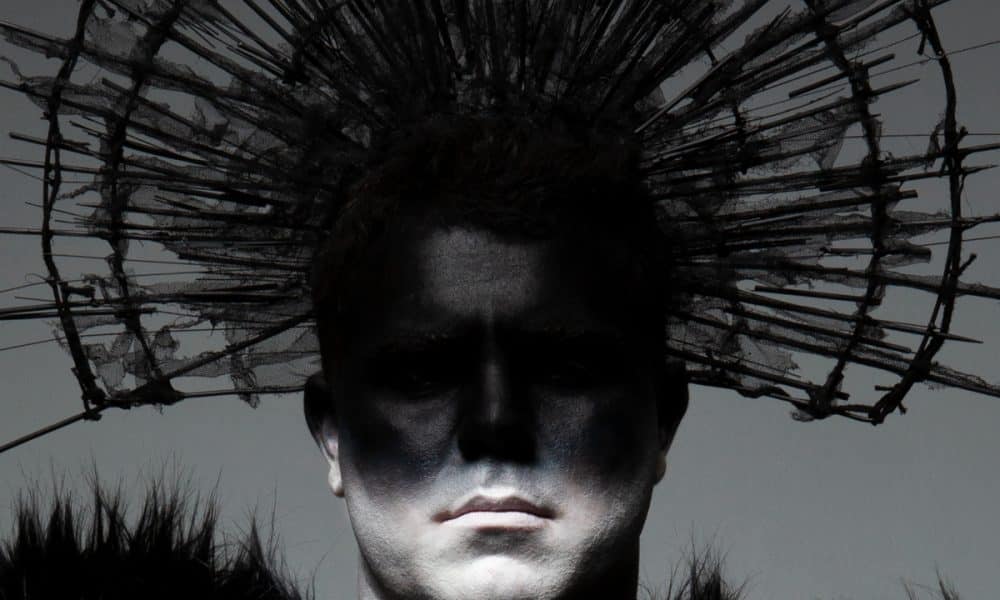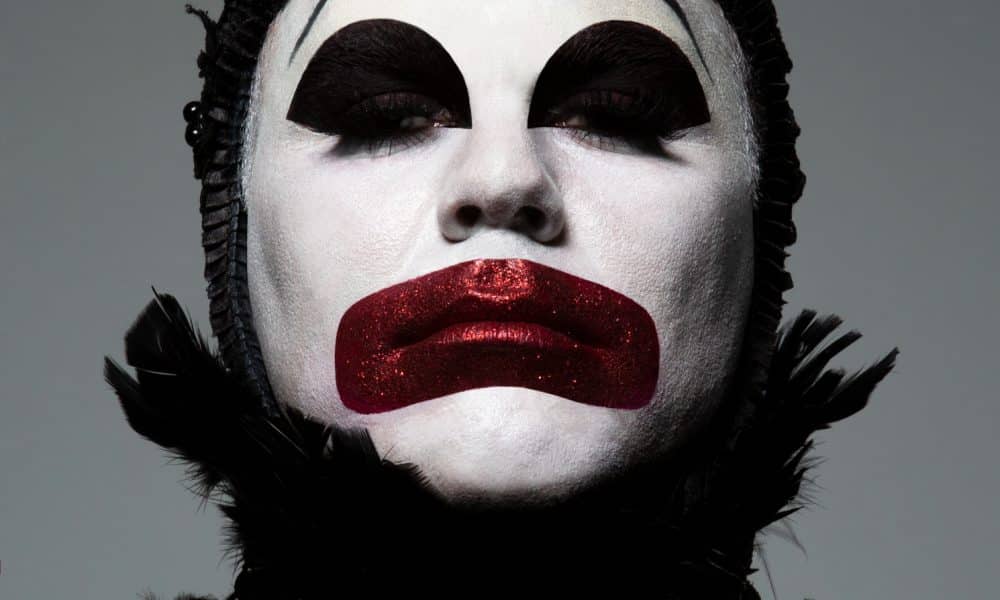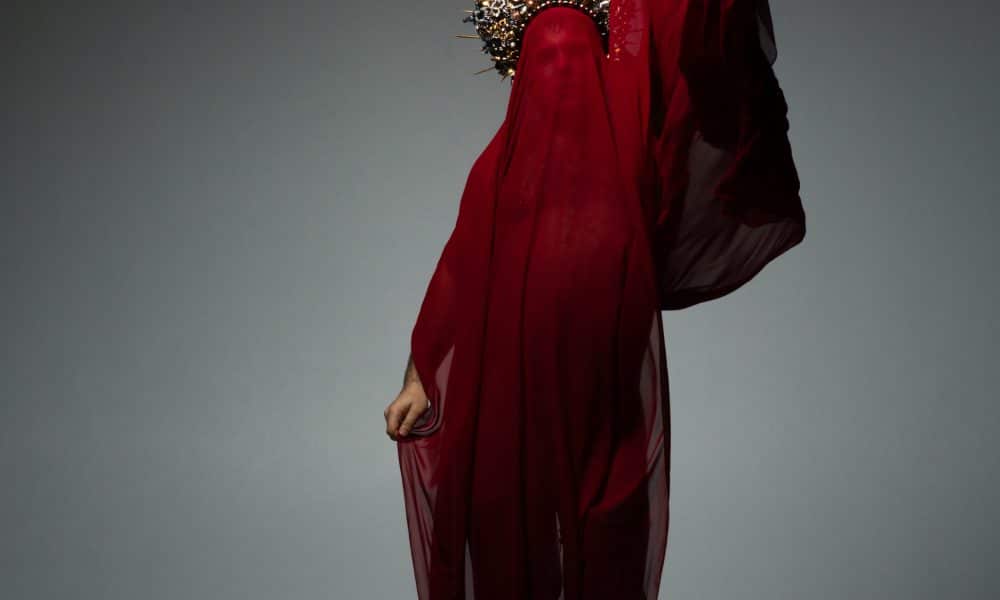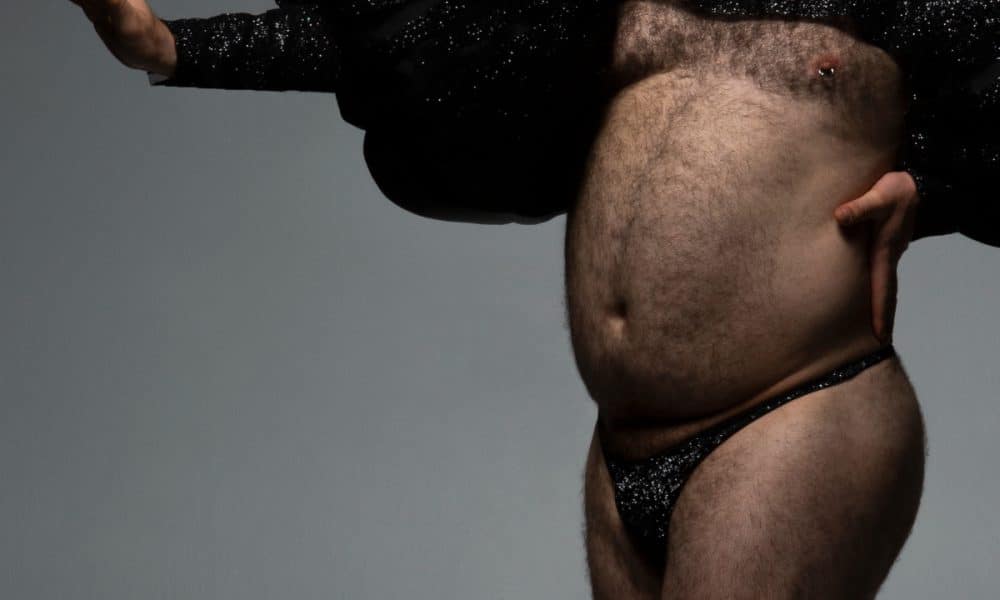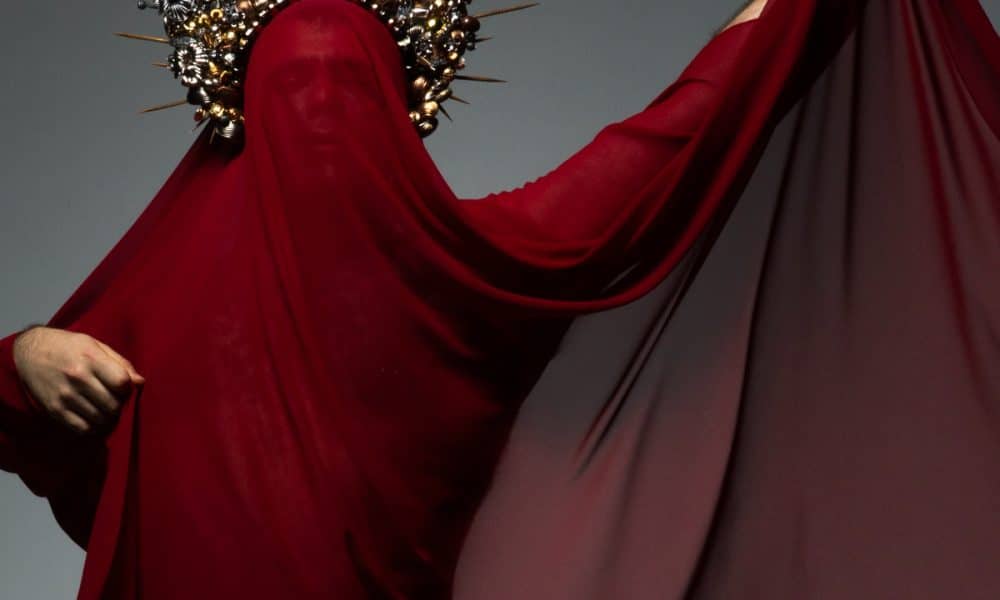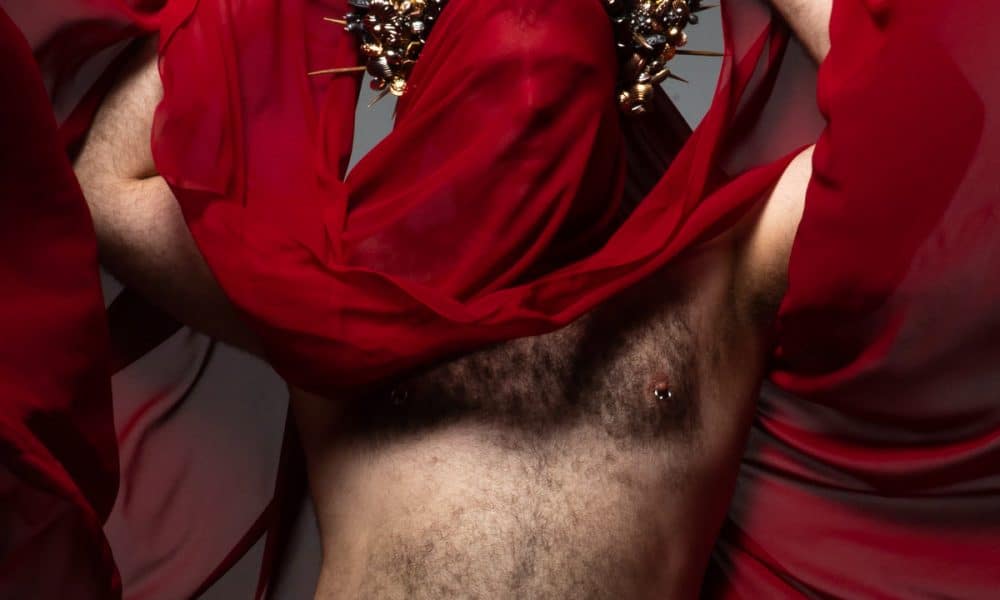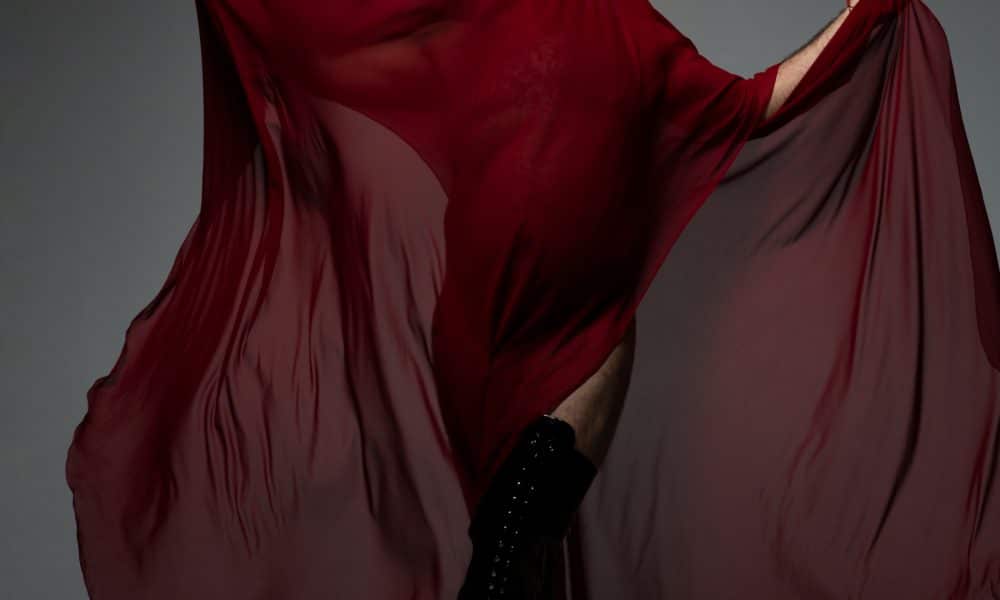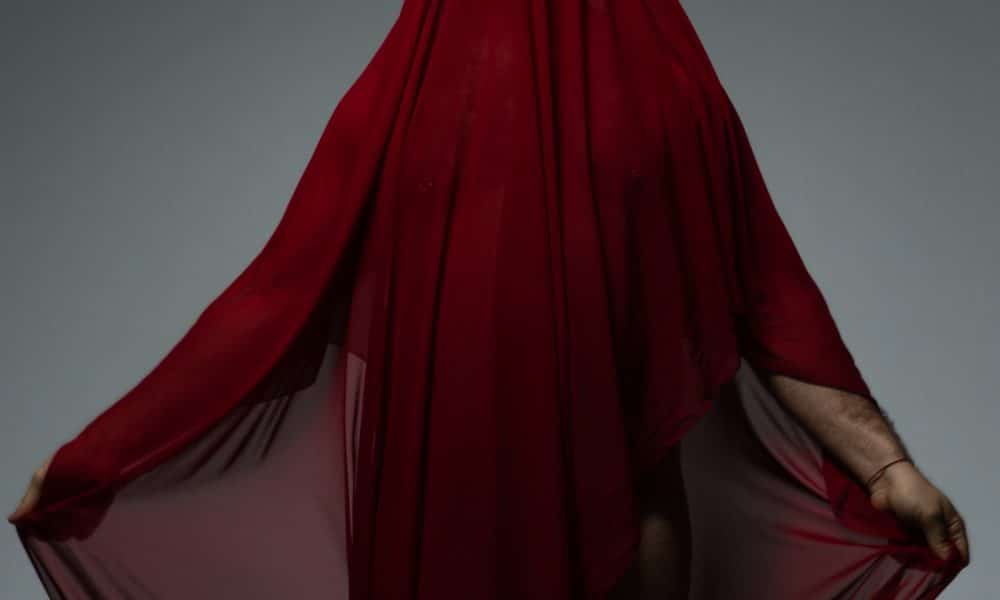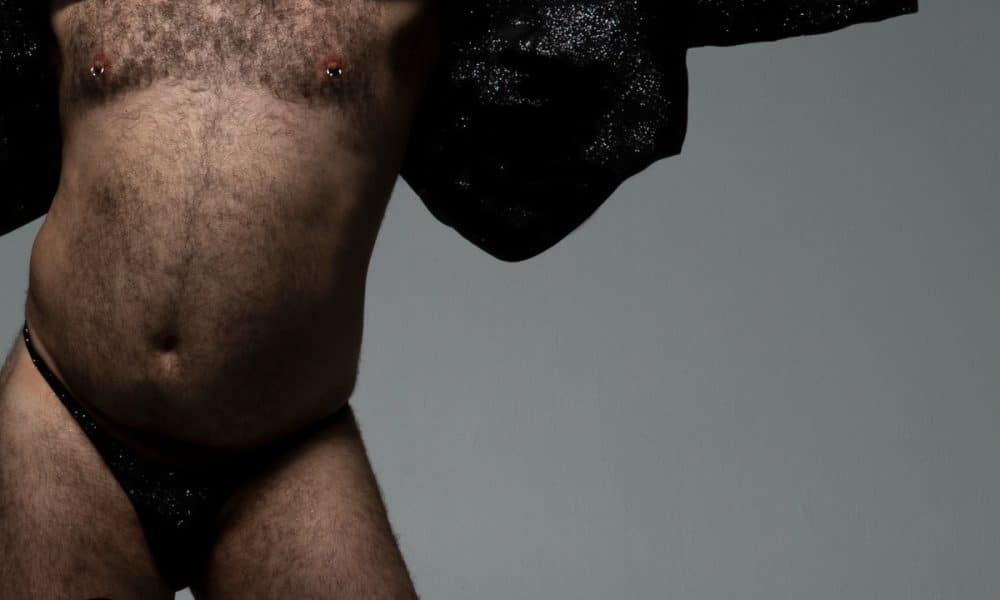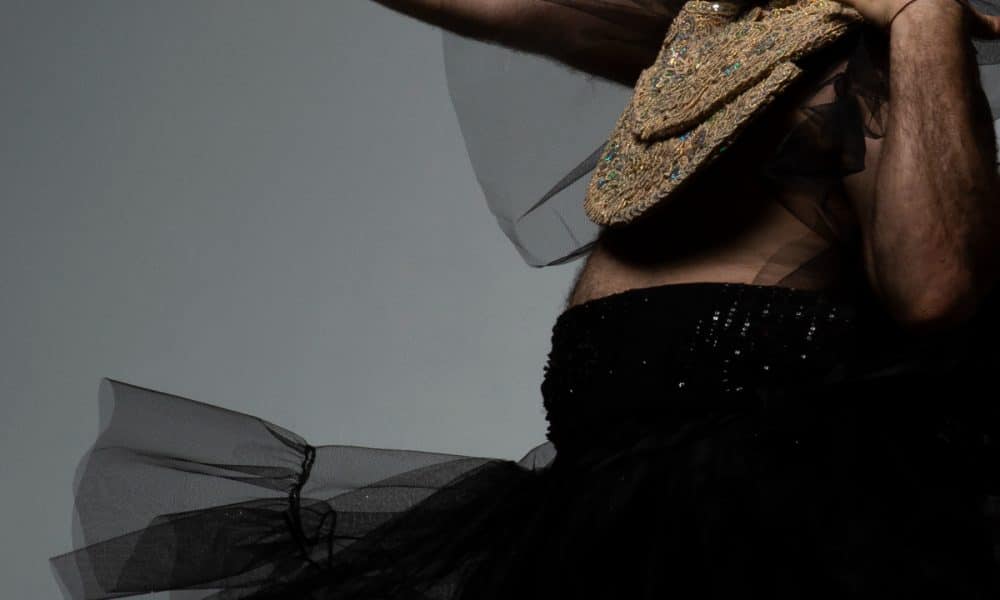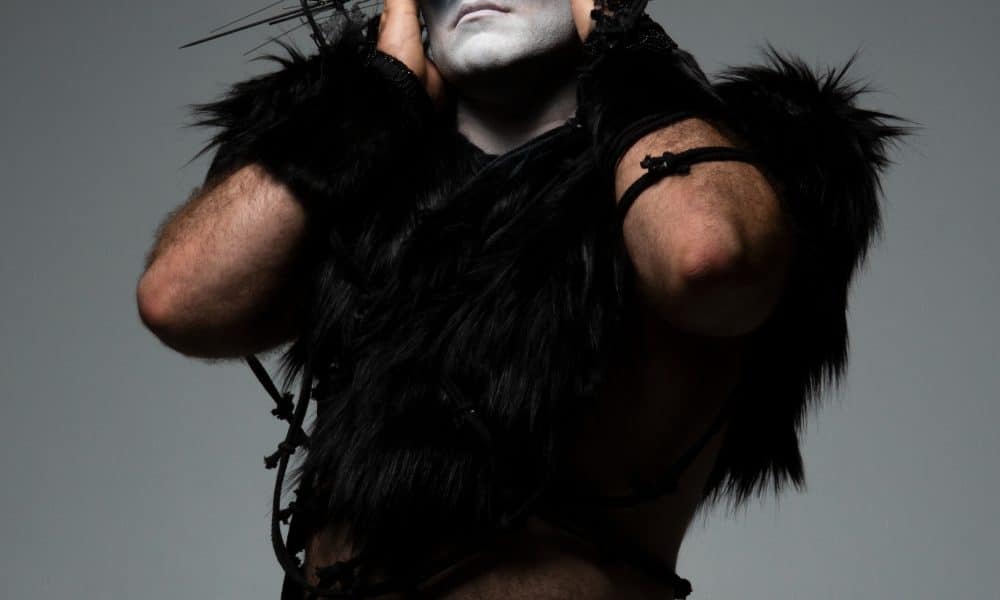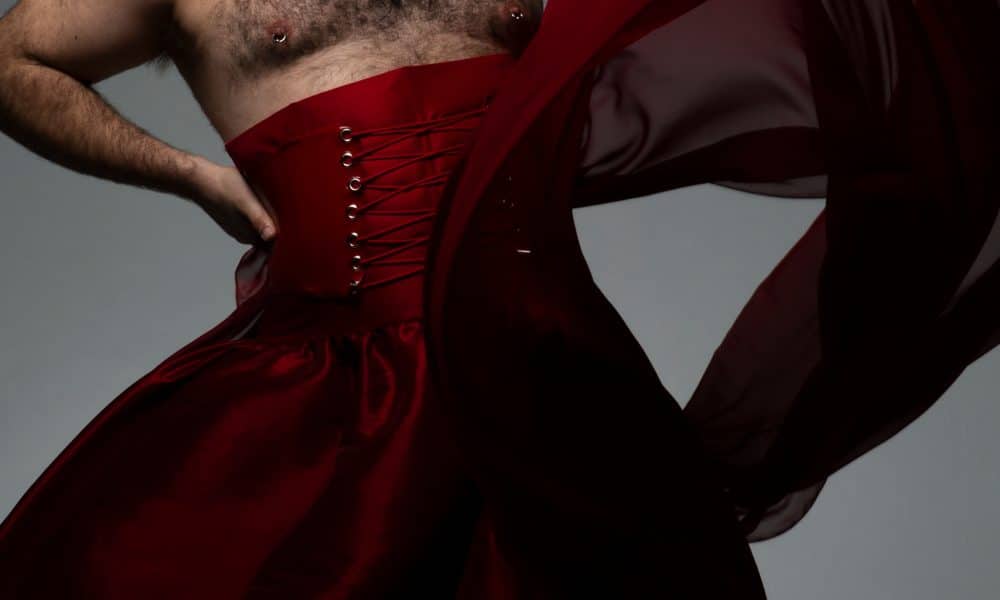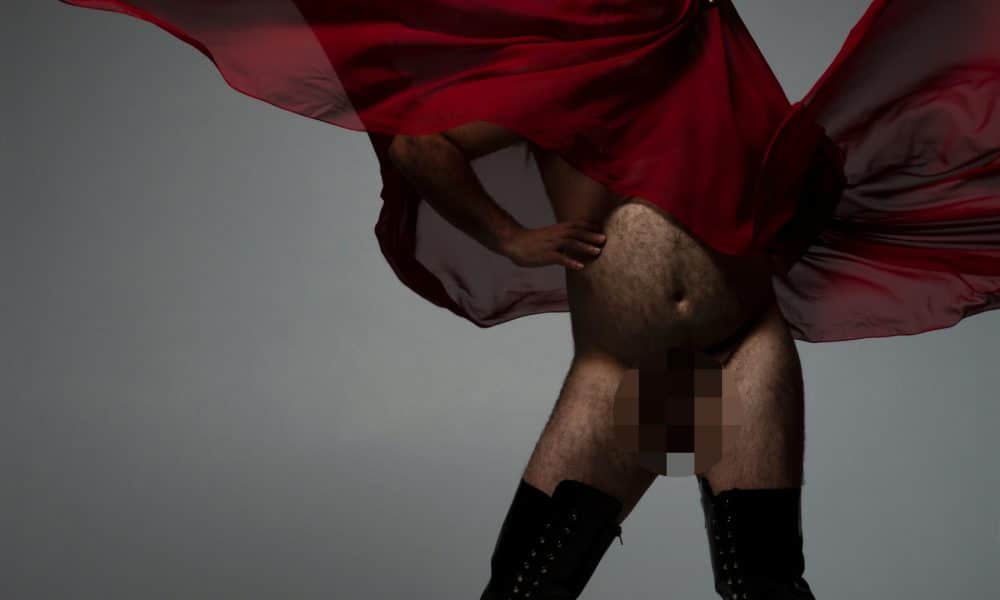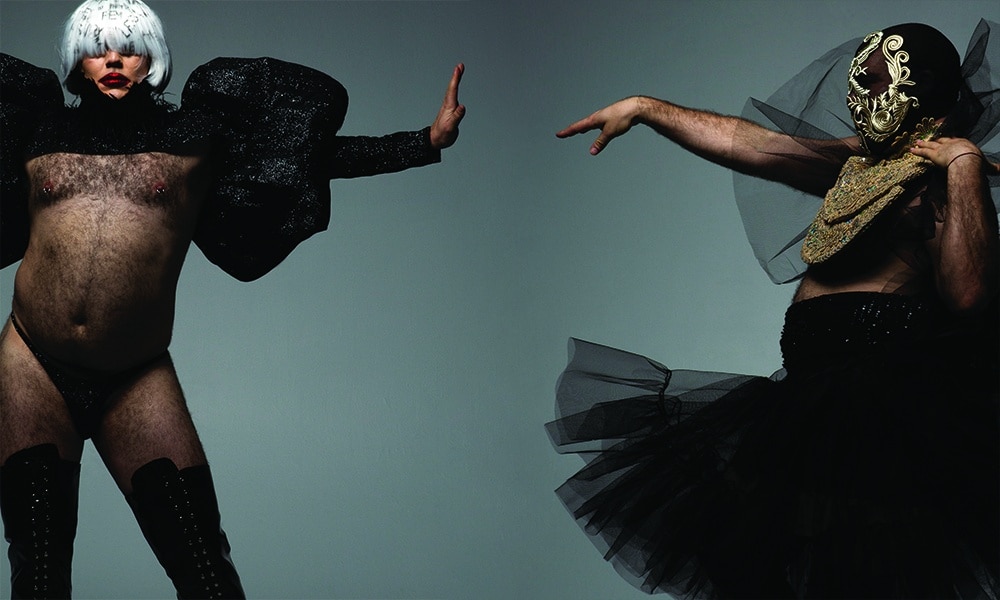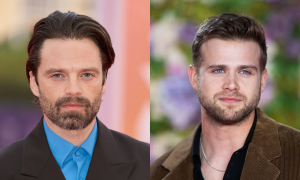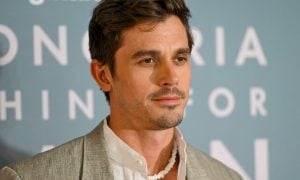If you can’t love yourself, how in the hell are you gonna love somebody else? The now famous words from RuPaul ring in my ears from time to time. As I look in the mirror, prodding and pulling at my body I can’t help but wonder. Why can’t I just love my body? Sometimes it feels like everyone else has figured out the formula for self-love and I’ve barely left square one. The truth, of course, is that I’m not alone in this experience. I am surrounded by people with deep-seated insecurities about their bodies. This is true even in a community that celebrates pride and rejects shame. To access desirability, people with bodies like mine must fit within a specific mold of masculinity and gender expression. How do we get past this? How do we celebrate our bodies and our expressions for what they are? Fat, fluid, and fierce.
Fat, Fluid, and Fierce
Enter Beltrán. The genderfluid model has built his career celebrating a body and expression that defies gender convention. Beltrán is among a select group of people who gave me a blueprint for accepting my body and gender expression. A while back Beltrán teamed up with Toronto-based photographer Anthony Patrick Manieri for a project called Arrested Movement. The groundbreaking series made waves online and certainly grabbed my attention. While Beltrán was there Manieri took the opportunity to shoot her for another series. Fat, Fluid, and Fierce turned up the dial on that series and expanded its focus to explicitly include gender expression.
I got the chance to ask Beltrán and Manieri some questions about the series. I also made sure to get Beltrán’s insight on body image and gender expression. Keep scrolling to appreciate the stunning portraits by Manieri, featuring Beltrán.
Related | This Gogo Dancer Proves Sexy Has No Size or Gender
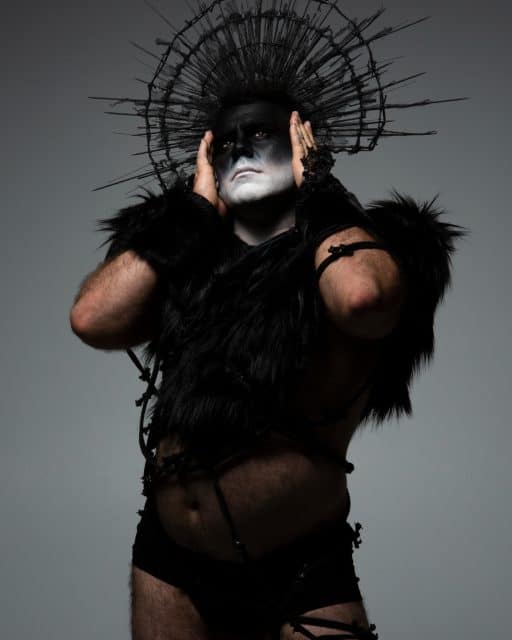
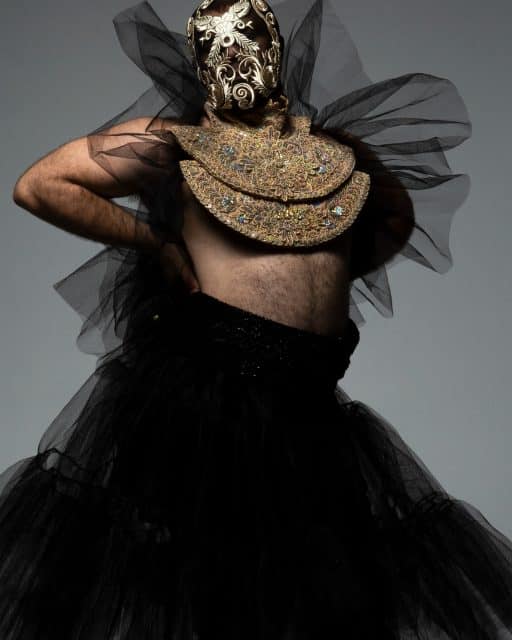
Gayety: These photos were shot by the incredible Anthony Patrick Manieri, who also created the acclaimed Arrested Movement project. How do these two projects compare and what does Fat Fluid & Fierce bring to the table?
Anthony Patrick Manieri: When I knew that it was confirmed that I would be photographing the incomparable Beltrán for my Arrested Movement series, I wanted to properly make use of his time with me. Beltrán, who is an artist in his own right, loves the fluidity of being. As a visual artist, I wanted to explore that with him. Beltrán refers to himself as fat-positive. He sometimes tends to be somewhat fluid in how he presents himself. And all that alone is fierce, and makes for great imagery and storytelling.
How do the two series compare? Well, I think it’s a quiet comparison. The subtext of both series’ is being body-proud. One does it quietly on a grander scale; The other is over the top and somewhat in your face. Arrested Movement is a stripped-back, soft, non-abrasive, nonoffensive assemblage, creating a narrative of what feels like a BIG exhale regarding men’s singular and collective journeys that I’m proud to have captured. The foundation of this series was to remind people that men feel too, we all struggle with body issues on some level because we are all human. And the narrative portrayed in the media regarding the term ‘body positivity’ is focused on women. And I wanted to have men included in that conversation.
The ‘Fat, Fluid, and Fierce’ series I did with Beltrán was loud, and playful, while definitely making a statement, which Beltrán excelled at. It was about blurring lines while playing with pop culture.
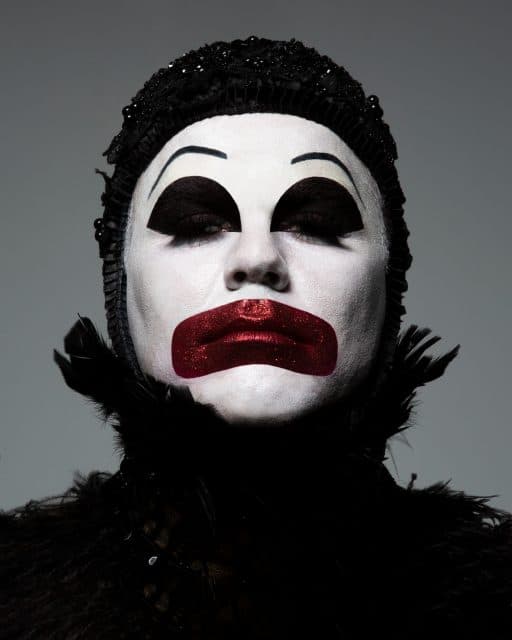
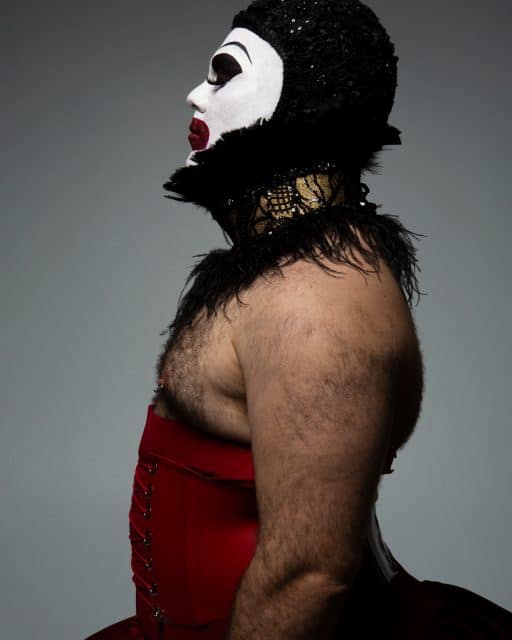
Gayety: In your experience how receptive are gay men specifically to the message that Fat Fluid & Fierce conveys?
Beltrán: I think that they have received it well but that there is still some resistance at the same time. I think it’s because of the fact that portraying masculinity that doesn’t comply with traditional gender norms in terms of what gender expression has always been and how it has been portrayed in social media creates some friction from time to time.
The latest advances in drag culture and art through mainstream media have given visibility to the elements that traditionally come with drag art, such as makeup or outfits usually associated with women or femininity. With this visibility and mainstream acceptance comes a disruption of traditional gender norms. One of the most disruptive elements of this editorial shoot for me as the model is that, traditionally, I was not the ideal representative of this mainstream concept of queer art; That is to say, this type of expression has always been reserved for thin frames and lean bodies.
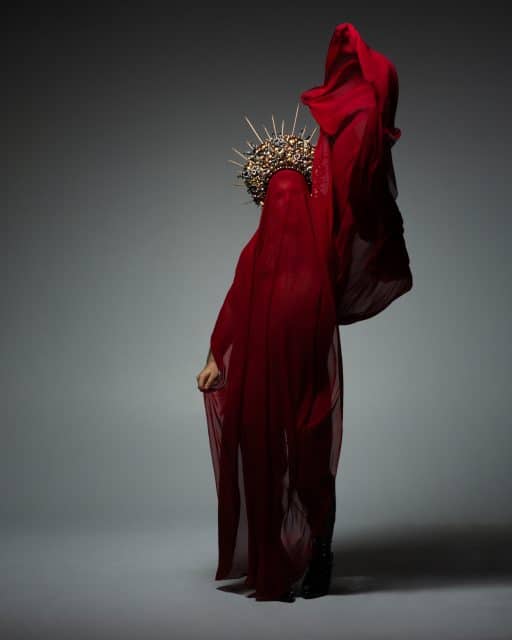
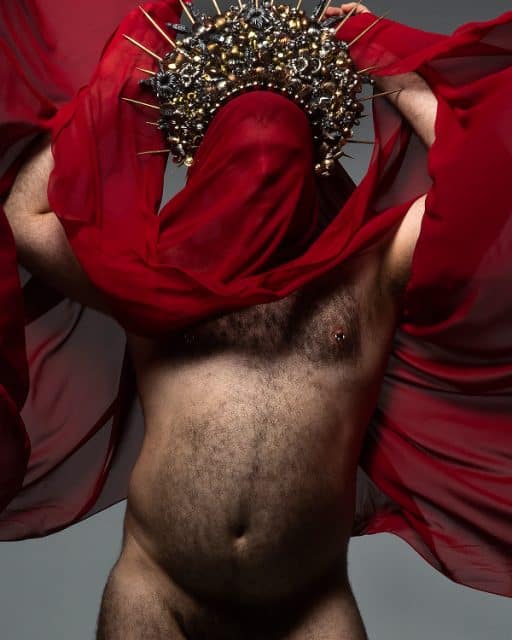
Gayety: Body positivity and body neutrality have become frequent topics of discussion online. Where does gender expression fit into this discourse?
Beltrán: I think that, in both cases, talking about either body positivity or nonconventional gender expressions, there is an ongoing debate on how to free ourselves from society’s traditional rules and mandates on what our bodies are supposed to become (while we are actively being raised to comply with those expectations). Body positivity tries to find ways to combat the lack of representation of body diversity in mainstream media and on the internet. On the other hand, the fight to make other ways of expressing your gender identity visible is also a fight that involves key tools such as representation.
With body neutrality, I find interesting the idea of battling against the idea of giving so much power to this sort of “book covers” our bodies represent in this image-based society. So much that they affect our well-being so deeply. When they should be only our means of material existence. Then, to fight against the incarceration of our gender expression between these only two options we were given since the day we are born. Both of them are ways to say “fuck you” to expectations that society tries to convince us to fill.

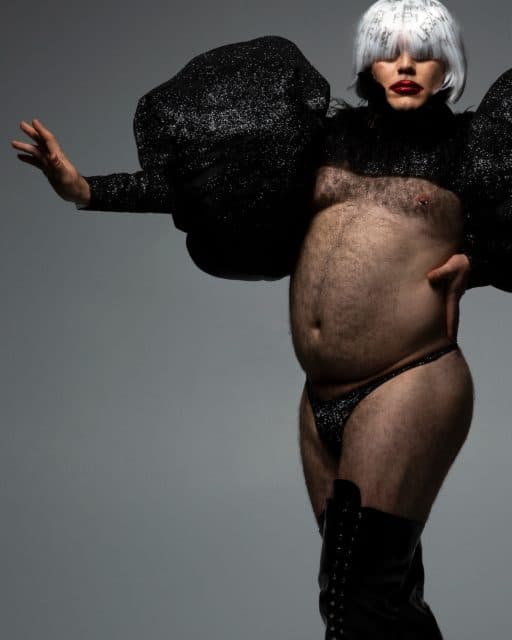
Related | 55 Illustrations Celebrating Bellies and Bears
Gayety: What has been your experience embodying both masculinity and femininity in a body that is both hyper-sexualized and criticized in the gay community?
Beltrán: I always say that eroticizing my body was a tool of empowerment and change in the way I perceive my body image in opposition to the insecurities I developed from being bullied. Over the years I discovered something that I like to call “mandatory Alosexuality” within the male gay community.
One of the negative consequences of all the years of (sexual) repression in the gay collective is that the community as a whole went to the opposite end of the spectrum, in which most of our interactions have to involve a minimum amount of sexualization. It’s hard for gay men to visualize an image that portrays male nudity (a piece of artwork, for example) without sexualizing the body of the model (specifically his genitals) or making comments about the model’s level of attractiveness. The most conflicting aspect of this phenomenon is that it insinuates that a male body outside of traditional beauty standards cannot empower itself without using erotic language as a tool.
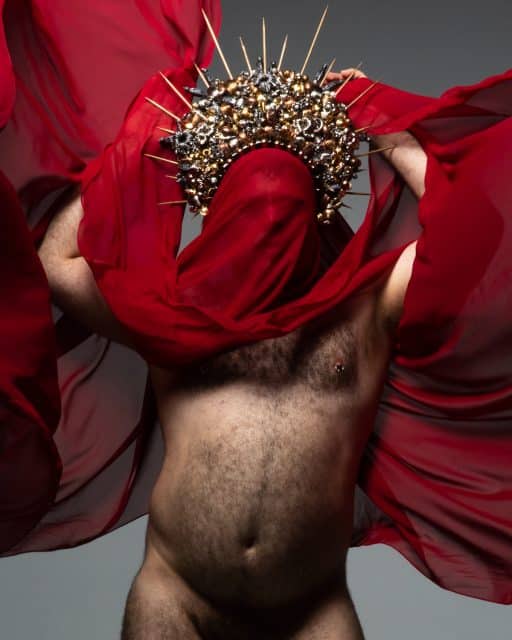
What Role Does Femininity Play?
Beltrán: Traditionally, femininity has not been well received as something appealing in a guy by the gay community. It can be used as a weapon of rebellion, of course, but for years, androgyny and fluid gender expression have again been reserved for lean and thin bodies, as if not having those traits makes femininity unacceptable.
As bears, we have had to conform to masculine traits in order for people to find us attractive. If not, you’re just seen as a “queer chub”, outside the realm of sexual attraction. Of course, these are just my general observations and they come with their own disclaimers and exceptions.
Everywhere you look, criticism is going to rear its head. Luckily, I also get compliments, but, most importantly, praise also finds its way to me from the people at which my activism is directed. Those who are least represented need to see someone doing something they thought they couldn’t do in order to believe that there is a path to express themselves.


Gayety: You worked with many talented creatives to bring this project to life. What was the experience of being on set like?
Beltrán: Being on set is always challenging because, whether you like it or not, someone will probably give you a look or say a comment or something that reminds you that people are not used to seeing bodies like mine on set. No matter how professional you act, there is a small part of you that always thinks and worries about what people might say when those pictures come to light. Practicing and becoming more professional has always been a way of protecting myself from anything that can throw me off my game. Working a lot is the best way to learn a lot, and when you are surrounded by amazingly creative people you end up learning a lot about photography, aesthetics, style, design, cinema, politics, communication, advertising, the fashion industry, and so on.

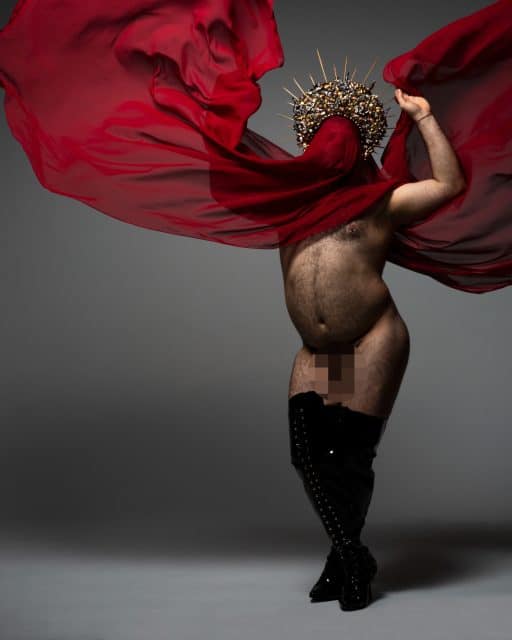
Gayety: Can you speak to the inspiration behind the costume design and makeup?
Beltrán: There isn’t a singular inspiration, but, in terms of style, I believe the idea was to merge a lot of elements of camp and drag art in a fluid game orbiting around traditional binary gender expressions. For instance, the black and white ombre makeup with the spikes in the warrior-like representation or the golden filigree Luchador mask paired with the ballet tutu and high heel boots. Some elements have always been at the disposal of queer artists to use, such as feathers, corsets, il pagliasso, shiny lively fabrics, vinyl, etc.
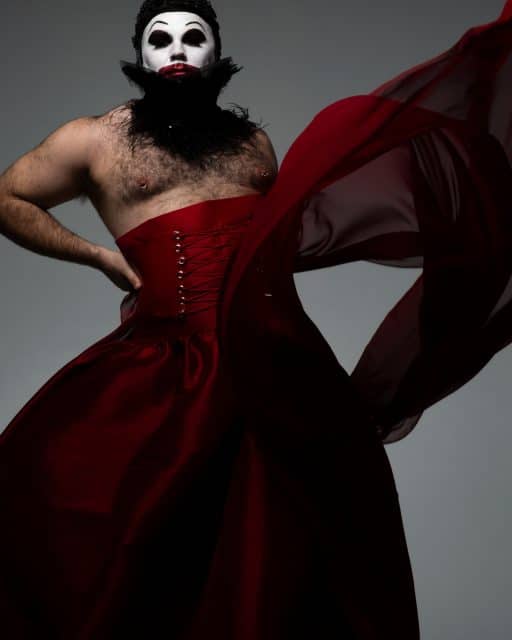
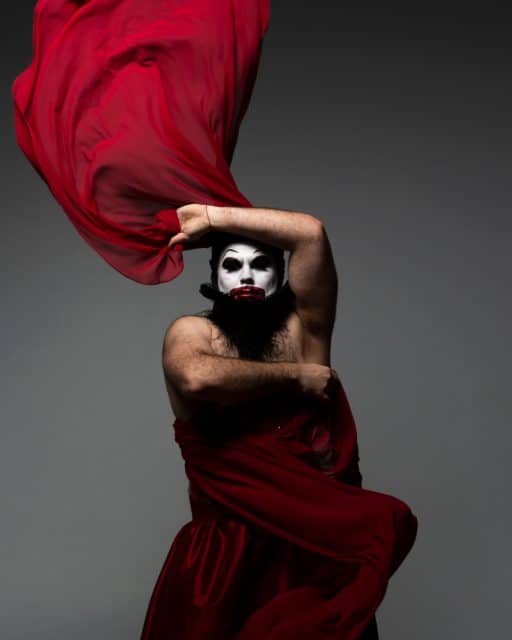
Gayety: Your face is partially or almost entirely obscured from most of the photos in this series. Can you speak to the specific intention behind this, if there was any?
Beltrán: If you take a look at the history and iconography of queer art expressions, there is always a sense of surrealism and of exceeding what reality offers to us while we are expressing our artistic spirit. That is why theatricality is so appealing when pop culture invokes it. This is also why a lot of gay people also gravitate towards makeup and masks, which we use to cover up boring reality with campiness, glamour, and fantasy.
For many LGBTIQ people, living an average life with basic human rights was (and, in some cases, still is) a fantasy, so why limit ourselves to fantasizing about dignity? That is why camp and drag art push those boundaries. They let us celebrate ourselves to our fullest and even further, pushing us into the surreal.

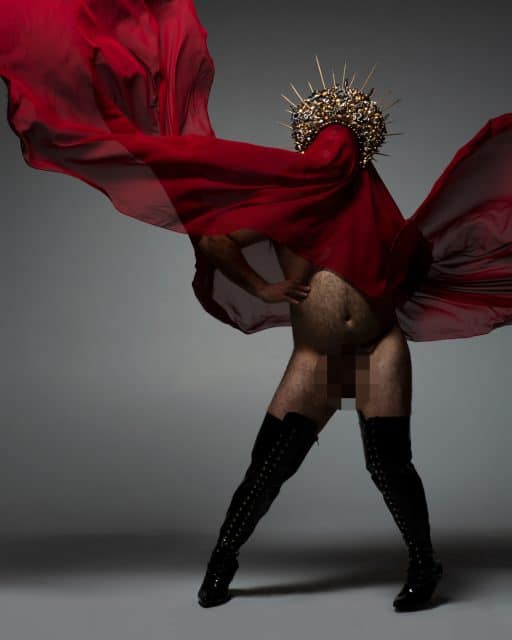
Related | 65 More Illustrations That Celebrate the Big Boys
Gayety: If you could say one thing to all of the fat, femme, self-conscious queer men and non-binary folks out there, what would it be?
Beltrán: Find yourselves and then find each other. There is nothing more healthy for a misunderstood underdog than to find peace in a shared existence. Not only for the intersectionality and intricacy of life stories where they cross. The sharing of trauma has always been a great engine to power up the political fight against what oppresses us.
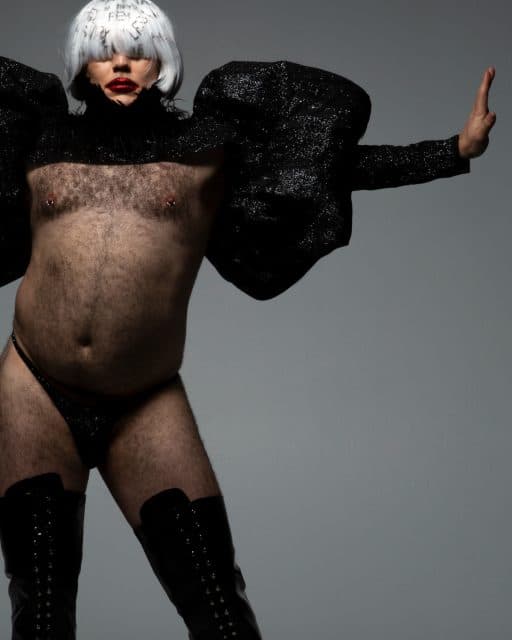
Gayety: What is your favorite shot of the series?
Beltrán: The “oops I did it” expression in the one-leg-standing golden filigree Luchador mask look gives me life. It expresses precisely how my personality and my mood are most of the time.

Gayety: What’s next for you and how can our readers support your work?
Beltrán: There is a complete link list to support and give to my art in my bio (and yes, it includes NSFW content). Just by sharing my art with others, you are helping me to reach new corners of the world, and that alone gives my creative spirit new life. For the Spanish speakers, I’m also hosting a podcast for Scruff called “Scruff Entre Amigos” that addresses current gay issues and topics of conversation.
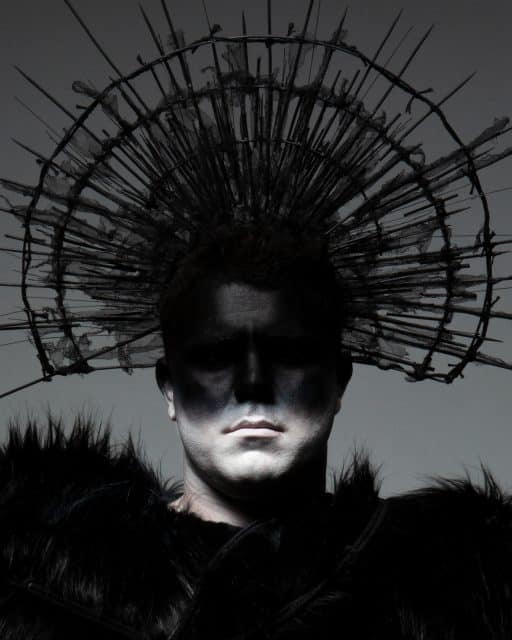
Before You Leave
I would like to take a moment to thank Beltrán and Manieri for these incredible portraits. I would also like to thank Beltrán for her thoughtful answers to my questions. The photo series also featured work by some incredibly talented stylists and makeup artists. I’ll list their names and social handles below so you can show them some love. Please take a moment to follow Beltrán and Manieri on Instagram, and check out the Arrested Movement series while you’re at it.
I may still have a distance to travel when it comes to loving my body and gender expression. But it’s projects like this that have given me the framework to start that journey. Depictions of fat, fluid, and fierce bodies in this context give me hope. Perhaps I can one day take up space so unapologetically. That day can’t come soon enough. Can I get an amen?
Fat Fluid & Fierce: Credits
Model: Beltrán
Photographer: Anthony Patrick Manieri
Makeup: Dawna Boot
Hair, Head Pieces, and Accessories: Ladylyn Gool
Clothing and Head Pieces: Kim Ironmonger for VALENCIENNE,
Cuffs and Head and Neck Pieces: Marie Copps
Gold Crown and Face Mask: David Dunkley

